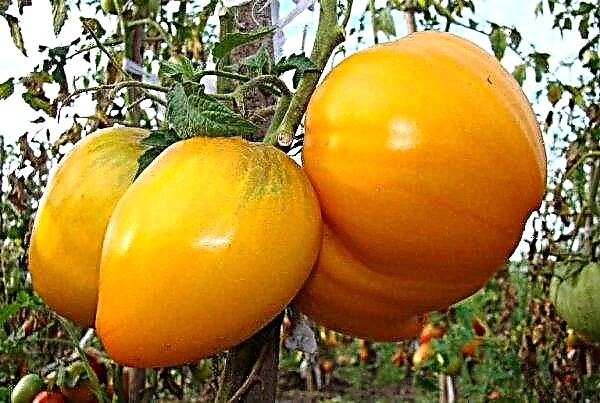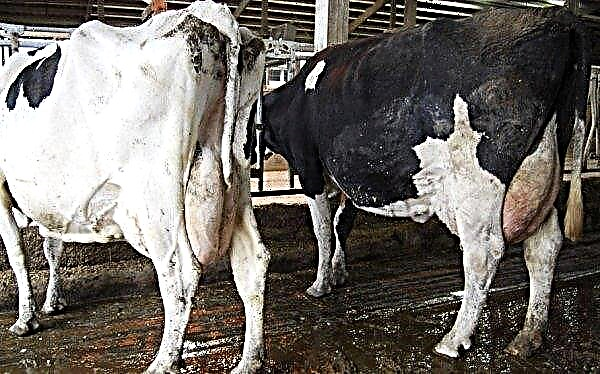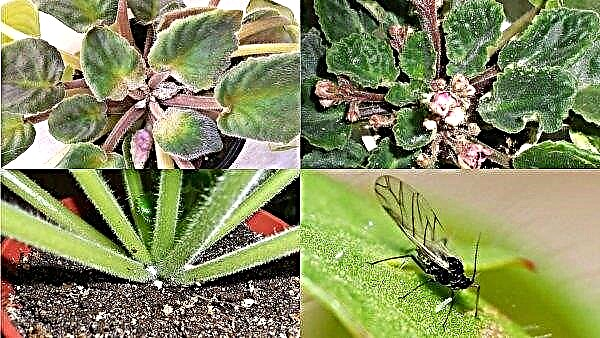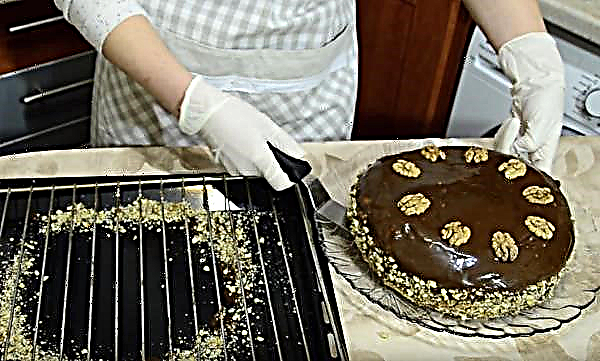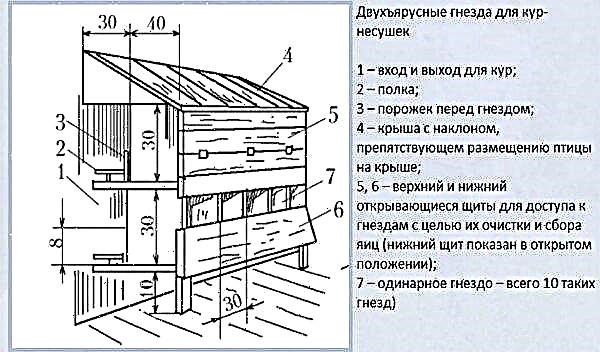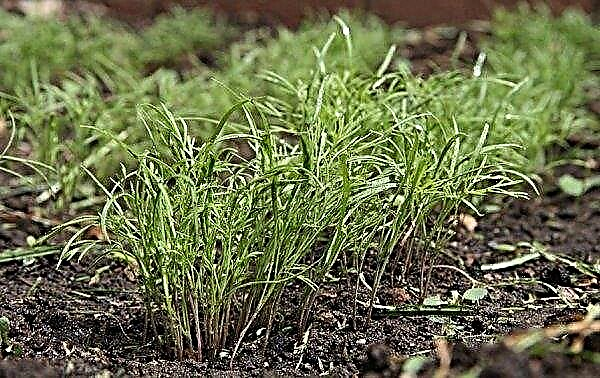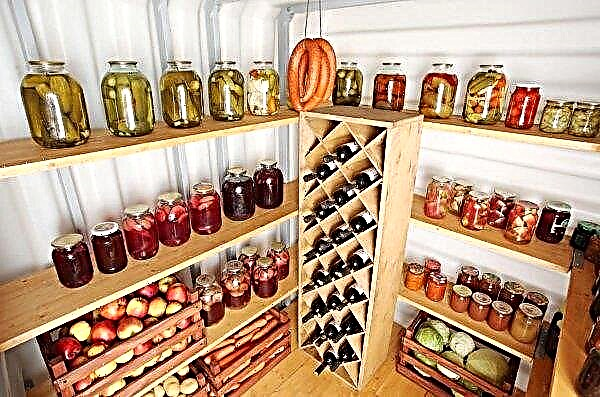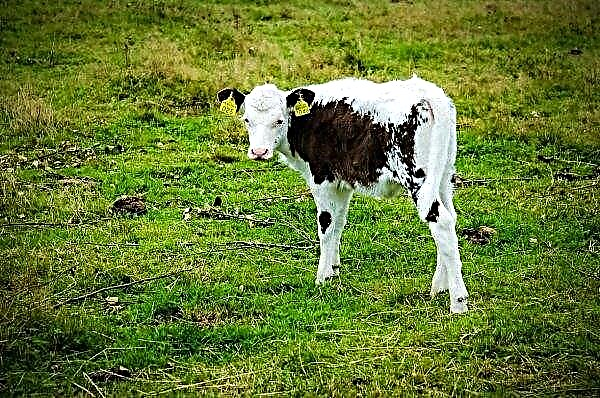Hydrangea is a decorative shrub that is used for landscaping and decoration of garden and summer cottages. Lush buds have a diverse range of colors, from cream and pink to deep blue. So that the plant does not lose its aesthetic value, it requires careful care and preparation for wintering. It is especially important to protect hydrangea from the cold in Siberia, where frosts can drop below -40 ° C.
Is it necessary to harbor hydrangea for the winter in Siberia
Several factors affect the plant's need for shelter. These include climatic features of the terrain, grade and soil moisture. For the Urals and Siberia, it is necessary to shelter the plants for the winter in early October.

In these regions panicle and tree-like varieties of hydrangeas are most often found. They are adapted to low temperatures and to blowing cold winds. To make the plant easier to winter, they must be prepared for low temperatures.
Protective materials
When preparing plants for wintering, you need to responsibly approach the choice of protective materials. A prerequisite is that the shelter must allow air to pass through. You can cover the plant with the help of roofing material, spruce branches, leaves, sawdust. It is necessary to use a plastic film correctly. In case of improper use, the shrub under it can be affected by a fungus and rot.
Did you know? Hydrangea was introduced to Europe in 1820 from Japan, after which in 1900 they began to conduct its selection and create new species.
Sprig branches
To cover the bush with spruce branches, you need to well cover the bushes. On the prepared near-stem circle, lapnik is laid out, after which the branches of the plant bend to the ground. The last layer consists of a waterproof non-woven material. It must be securely fixed above the surface of the structure.
Leaves
The most popular use of dry leaves is to shelter hydrangea shrubs. It is important not to use the fallen leaves of fruit trees. It is best to fill the bush with maple or chestnut leaves. Usually such a shelter is clearly not enough to protect the plant from the cold. The protective layer must be carefully covered with burlap.
Sackcloth
It is good to use burlap as a winter shelter. To protect hydrangea from the cold for sure, the material is bent in 2-3 layers. On top of the burlap you can prepare a shelter from a plastic film with holes.
Polyethylene film
A plastic film for shelter is used to protect the shrub from excess moisture. Hydrangea is not afraid of excess moisture, such as roses, so it does not require special protection from water.
Important! In spring, the film must be removed so that the plant does not become hot. If this is not done on time, hydrangea can become infected or dry out.
Before you cover the plant with a film, you need to build several layers of non-woven material above it. It is important to leave holes so that the shoots have access to air.
Preliminary Activities
Before sheltering hydrangea, it is necessary to trim the leaves. After this, the branches need to be bundled and knitted. This is necessary so that the shoots do not break from bending. Next, the bound shoots need to be tilted and pressed to the soil, and then fixed with metal clips. Instead, bent welding electrodes can be used. If the shoot is lignified and resists bending, then the procedure is carried out gradually.
Did you know? Hydrangea absorbs aluminum from the soil, which is why some species are able to acquire a bluish tint of flowers.
Pruning
Timely pruning of the plant is needed in order to ensure full flowering in the future. It is performed before the onset of frost. For Siberia, September is considered the most suitable time. Having cut off the buds and leaves dried in the fall, you can not worry that under the winter shelter they will rot. Carrying out the procedure, you should leave flower buds that cover special leaves.
When cutting a plant, you must adhere to the following rules:
- remove branches only in healthy specimens that already have 4 years old at the time of the care procedure to avoid decay;
- branches can be removed almost completely from old shrubs to get new young shoots in their place;
- rejuvenation is carried out no more than once every 3-4 years.

Top dressing
Top dressing is done twice a year. PThe first time fertilizers are applied in the spring, the second - during the appearance of inflorescences. A mixture of potassium, superphosphate and urea in equal proportions is best suited for spring fertilizer. One shrub should account for about 120 g of fertilizer. During flowering, top dressing is carried out using superphosphate and potassium in a 2: 1 ratio.

Pest and Disease Prevention
A prerequisite for preparing hydrangea for wintering is its preventive treatment from pests and diseases. For this purpose, the bush and the soil around it are sprayed with 3% Bordeaux liquid or 1% solution of copper sulfate. The procedure is carried out in autumn at a temperature of about + 7 ° C, when the leaves are already fallen. This will help protect the shoots from pests and diseases that can affect the plant with the onset of heat.
Rules for hiding flowers
To properly wrap hydrangea, you need to know its grade. There are 70 varieties of flower varieties. Each of them has its own characteristics of care, however, most species are unstable to low temperatures and can die in winter. In autumn, shortly before sheltering plants, you need to stop watering and cut off the lower tier of leaves.
Large-leaved
Large-leaved varieties of hydrangeas are wrapped in several ways:
- Lapnikom. The branches of the tree are laid near the bush plants, sprinkled with a dense layer of fallen leaves. Hydrangea branches must be laid on top of the leaves and insulated with a protective film or sawdust. All protective layers are insulated with a waterproof material stretched over it, for example, roofing material.
- Traditional method. The branches of the bush are tilted to the ground, strewn with a thick layer of leaves on top. Top cover with a protective PVC film with small holes.
- Skeleton. Around the shrub make a mesh frame in which empty spaces are filled with dry leaves. The entire structure is covered with waterproof material.

Panicled
Panicled hydrangea is a shrub with inflorescences in the form of lush balls. In diameter, they reach 30 cm. The plant is unpretentious, therefore rarely needs wrapping. For the Siberian region, it is necessary to protect young specimens from frost that were planted in the soil in the fall.
The protection procedure looks like this:
- A frame for branches that protects fragile branches from snow and wind.
- Hilling manure soil around the plant. Sawdust or peat can be used instead of manure, but note that the cover should be at least 20 cm.

Tree-like
Treelike hydrangea varieties are the most resistant to frost. Often they do not need shelter. However, in Siberia shrubs are better to provide at least minimal protection against frost. To do this, it is enough to mulch the soil near the trunk of the plant.
Important! Even if the tips of the branches of the tree hydrangea are slightly frozen, this will not affect the flowering buds.
What varieties do not require shelter
The most demanding care is large-leaf hydrangea. It is not resistant to cold, so you need to carefully take care of the shelter of plants. In addition to an artificial protective shelter, snowdrifts well protect from the cold. Treelike are resistant to frost and tolerate temperatures up to -30 ° C.
Panicled hydrangea is often grown in the regions of the Urals and Siberia due to good frost resistance. In order for the plant to winter well, you need to protect the root from freezing by mulching the trunk circle.
Mistakes of novice gardeners
Most varieties are unpretentious to care for.
Experienced gardeners shared tips on growing hydrangeas for novice gardeners:
- The plant favors cultivation on acidic soils and in the shade. Before covering it is recommended to mulch the trunk circle with humus from the leaves. Better yet, take spruce needles instead of leaves.
- The comfort of wintering is affected by fertilizing with potash or phosphorus fertilizers.
- Cutting off faded buds should be done in a timely manner.

Hydrangea care is not a complex procedure. Even a beginner gardener will cope with it. Having protected the shrub from frost, you can expect abundant flowering of your favorite plant next year.


